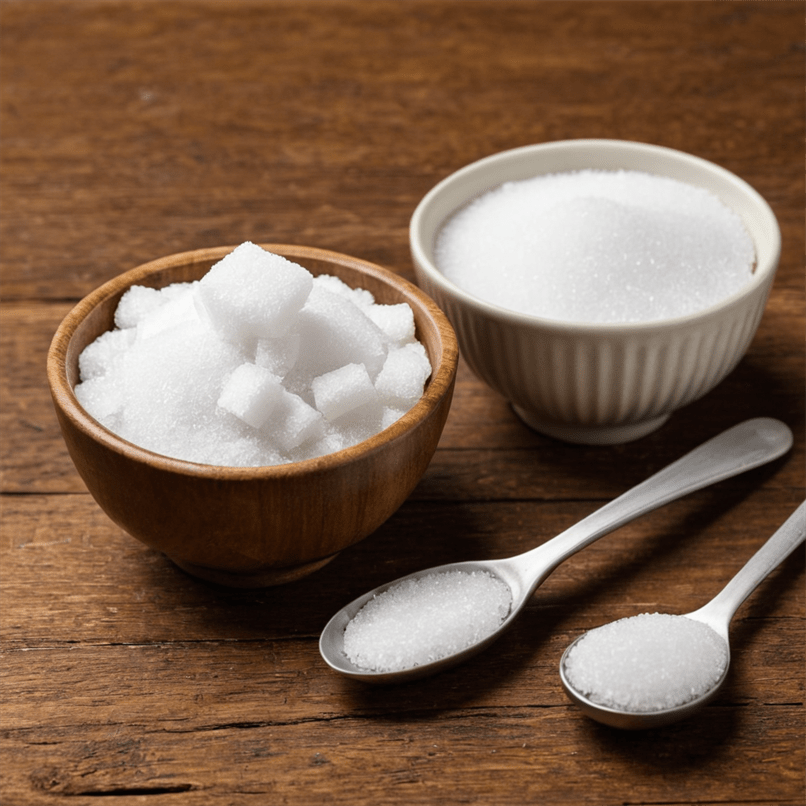Why Your Brain Thinks Sugar Is Cocaine (And How to Break Up With Your Sweet Dealer)

You know what nobody tells you about sugar addiction? It’s sneakier than a cat burglar and twice as destructive to your peace of mind.
I learned this the hard way back in 2018 when I found myself standing in my kitchen at 11 PM, spooning peanut butter straight from the jar while telling myself it was “just protein.” The next morning, I’d wake up feeling like I’d been hit by a truck, promising myself I’d do better, only to find myself back in the same spot 12 hours later.
Here’s the thing your sweet tooth doesn’t want you to know: sugar addiction is as real as a heart attack, and your brain literally cannot tell the difference between a candy bar and a line of cocaine. That’s not me being dramatic—that’s neuroscience talking.
The Science Your Doctor Probably Didn’t Explain
When you eat sugar, your brain lights up like a Christmas tree in the exact same regions that respond to addictive drugs. Dr. Nicole Avena’s research at Princeton showed that rats given sugar developed the same addiction patterns as rats given cocaine—bingeing, craving, and honest-to-goodness withdrawal symptoms.
Your brain doesn’t care that sugar comes from a grocery store instead of a street corner. It just knows that dopamine hit feels mighty fine, thank you very much.
But here’s where it gets really twisted: every time you spike your blood sugar with a candy bar or frappuccino, your pancreas freaks out and dumps insulin into your system like it’s putting out a five-alarm fire. That insulin doesn’t just clean up the sugar—it overshoots the landing and crashes your blood sugar lower than it was before you ate anything.
Then your body hits the panic button. “EMERGENCY! NEED FUEL NOW!” And guess what sounds really appealing when your blood sugar is in the basement? More sugar.
It’s like being in an abusive relationship where your partner keeps apologizing with flowers, except the flowers are Oreos and your partner is fructose.
The Sneaky Sugar Hiding in Your “Healthy” Food
Here’s what’ll make you madder than a wet hen: the food industry has been playing hide-and-seek with sugar for decades, stuffing it into everything from pasta sauce to whole grain bread.
That yogurt you grabbed because it’s “healthy”? It’s got more sugar than a candy bar. Those protein bars that cost five bucks and promise to fuel your workout? Half of them have enough sugar to send a hummingbird into orbit.
I had a client—let’s call her Janet—who couldn’t figure out why she was craving sweets all afternoon. Turns out her “nutritious” lunch of turkey sandwich, fruit cup, and flavored yogurt was delivering more sugar than a Snickers bar. No wonder her energy was crashing harder than a reality TV marriage.
The food companies have gotten so clever with sugar names that reading a label is like trying to decode secret government documents. They’ll call it “evaporated cane juice” or “brown rice syrup” or any of the other 61 names they’ve dreamed up to make sugar sound like health food.
Here’s my rule: if it ends in “-ose” or sounds like it belongs in a chemistry lab, it’s probably sugar trying to fool you.
How to Break Up With Sugar Without Losing Your Mind
Now, I’ve tried the cold turkey approach, and let me tell you, it’s about as pleasant as a root canal performed by an angry badger. Your body goes into full rebellion mode—headaches, irritability, fatigue that makes you feel like you’re walking through molasses.
The smarter approach is treating this like the breakup it is: gradual, with clear boundaries, and a good support system.
Start with the obvious stuff—dump the soda, ditch the candy drawer, and stop pretending that frappuccino is coffee. It’s a milkshake with delusions of grandeur.
Then get sneaky right back at the food industry. Start reading every single label like your life depends on it, because honestly, it kind of does. When you see how much sugar is hiding in your “healthy” choices, you’ll be madder than I was when I discovered my favorite whole grain crackers had more sugar than my cookies.
Week by week, start cutting the strings that tie you to your sweet dealer. Replace that afternoon candy bar with an apple and almond butter. Swap your sugar-bomb breakfast cereal for eggs and avocado toast. Your taste buds will throw a tantrum at first, but they’ll adjust faster than you think.
The Substitutes That Won’t Sabotage Your Progress
Let’s be real—sometimes you need something sweet, and willpower alone isn’t going to cut it. That’s where smart substitutes come in, not as crutches but as tools to help you transition.
Stevia gets a bad rap for being bitter, but the good stuff (and I mean the really good, not-processed-in-a-factory-that-makes-chemicals stuff) can be a game-changer. Monk fruit is another winner that doesn’t taste like you’re licking a chemistry set.
But here’s what I tell all my clients: don’t just swap sugar for artificial sweeteners and call it a day. That’s like switching from whiskey to beer and thinking you’ve solved your drinking problem. The goal is to retrain your taste buds to appreciate less sweetness overall, not to maintain your sweet tooth with different fuel.
I watched my neighbor try to quit sugar using nothing but diet soda and sugar-free cookies. Six months later, she was still craving sweets all day long because she never actually broke the habit—she just changed dealers.
Your 30-Day Reality Check
Here’s the plan that actually works, no fairy tales or magic bullets required.
Week 1: Get real about your current situation. Track everything you eat for three days—and I mean everything, including that handful of M&Ms you grabbed from your coworker’s desk. Knowledge is power, and you can’t fix what you won’t acknowledge.
Week 2: Start with the low-hanging fruit. Eliminate liquid sugar completely—no soda, no juice, no fancy coffee drinks. Replace them with water, unsweetened tea, or coffee with a splash of cream. Your body will thank you, even if your taste buds file a formal complaint.
Week 3: Address the hidden sugars. This is where you become a detective, investigating every sauce, dressing, and packaged food in your kitchen. Start cooking more at home where you control what goes into your food.
Week 4: Focus on crowding out the bad with good. Fill your plate with protein, healthy fats, and vegetables that will actually satisfy you instead of sending you on another blood sugar roller coaster ride.
The withdrawal is real, friends. You might feel like you’ve been hit by a truck for the first few days. Drink plenty of water, get good sleep, and remember that this too shall pass. The headaches and crankiness are temporary; the freedom on the other side is permanent.
What Life Looks Like on the Other Side
Six months after my midnight peanut butter interventions, I can honestly say I don’t miss being a slave to sugar cravings. I still enjoy dessert occasionally, but it’s a choice, not a compulsion.
My energy doesn’t crash at 3 PM anymore. My skin cleared up. I sleep better. And the best part? Food tastes better when you’re not constantly overwhelming your taste buds with artificial sweetness.
That apple I used to think was boring? Now it tastes like nature’s candy. Bell peppers have this subtle sweetness I never noticed before. Even carrots taste like a treat when your palate isn’t constantly being assaulted by high-fructose corn syrup.
Breaking up with sugar isn’t about deprivation—it’s about liberation. It’s about taking back control from an industry that profits from keeping you addicted and exhausted. Your body was designed to run on real food, not chemical cocktails masquerading as nutrition.
The choice is yours: stay in that toxic relationship with sugar, or break free and discover what your body can really do when it’s properly fueled. Trust me, the view from the other side is worth every moment of temporary discomfort.
About Althea K. Brewer
Althea K. Brewer is a registered nurse turned wellness advocate who specializes in helping people break free from diet culture and develop sustainable relationships with food. With over 15 years of clinical experience and a no-nonsense approach to health, she combines evidence-based nutrition science with practical wisdom gained from her own journey away from chronic dieting. Althea lives in Northern California where she writes, consults with clients, and occasionally attempts to grow vegetables that don’t immediately die. She believes that good health should be accessible, sustainable, and free from shame or perfectionism.

